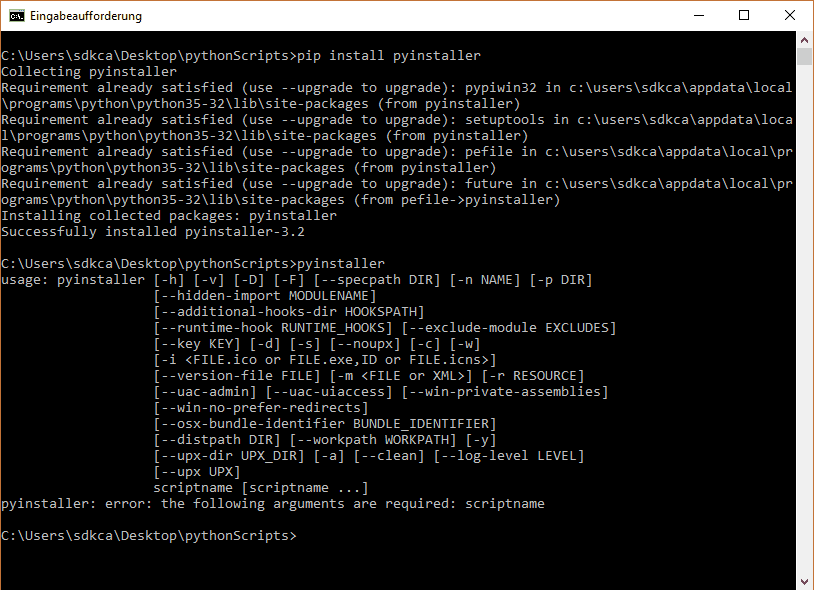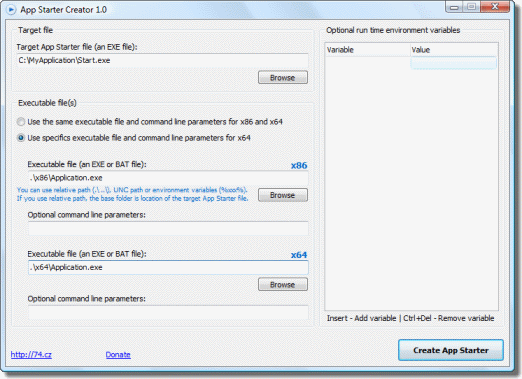
Setup Creator Software
Setup Creator Utility generates self extracting exe file which helps in deploying windows application over internet or other media. Software generates small and compact size setup package (exe files) which takes less memory space, less turnaround time to install.
Create a single exe file. If you want all generated files in one executable file, type pyinstaller -F myscript.py. When you look at the files generated, there are 3 directories. Go to the dist myscript directory and there will be only one file – myscript.exe. It’s bigger than before, but you can take it outside the directory and it will. MakeAppx.exe creates both app packages (.msix or.appx) and app package bundles (.msixbundle or.appxbundle). MakeAppx.exe also extracts files from an app package or bundle and encrypts or decrypts app packages and bundles. This tool is included in the Windows 10 SDK and can be used from a command prompt or a script file. EXE creators will allow developers to build their own installers containing their applications and the corresponding documentation. One can also built EXE installers by converting files of other. The csc.exe executable is usually located in the Microsoft.NET Framework folder under the system directory. Also, if you have the full version of.NET 4.0 (not client profile), you will probably have msbuild.exe in the same place.
It requires only installation and a text editor. Go produces native executables for almost any OS. By default, it will build you a native executable for the.
MSI to EXE Creator Software
MSI to EXE Creator Program generates EXE (Executable File) from your Existing Microsoft .MSI (Windows Installer) files. Software converts executable (.exe) setup files by using the original Microsoft installer (.MSI) files format without altering the basic functionality and structure of your application.
QuestionHow do I create a log file for .MSI and .EXE files?
Answer

You can create a log file by either using the '/L' command line option or using the logging policy. Select the method that is best for your installation.
To use the /L command line option with Msiexec.exe:
The following list of command line options relating to the log file is from the Microsoft Windows Installer SDK.
/L [i|w|e|a|r|u|c|m|o|p|v|+|!]

Writes logging information into a log file at the specified path. Flags indicate which information to log. If no flags are specified, the default is 'iwearmo.'
i - Status messages
w - Non-fatal warnings
e - All error messages
a – Action start-up

r - Action-specific records
u - User requests
c - Initial UI parameters
m - Out-of-memory or fatal exit information
o - Out-of-disk-space messages
p - Terminal properties
v - Verbose output
+ - Append to existing file
! - Flush each line to the log
'*' - Wildcard, log all information except for the v option. To include the v option, specify '/L*v'

Example for an .MSI file:
MSIEXEC /I “C:Program FilesMy MSI.msi” /L*v “C:Program FilesInstallLog.txt”
Example for an .EXE file:
“C:Program FilesMy EXE.exe” /L*v “C:Program FilesInstallLog.txt” /I
To use the logging policy:
Set the following registry key to define the log file policy on the computer:
• Registry Key: HKEY_LOCAL_MACHINESoftwarePoliciesMicrosoftWindowsInstaller
• String Registry Value: Logging
• Registry Value Data: This data can by any of the following letters or any combination of them.
i - Status messages
w - Non-fatal warnings
e - All error messages
a – Action start-up
r - Action-specific records
u - User requests
c - Initial UI parameters
m - Out-of-memory or fatal exit information
o - Out-of-disk-space messages
p - Terminal properties
v - Verbose output
! - Flush each line to the log
How To Make A Setup.Exe File | It Still Works
Note that you cannot use '+' and '*' for the policy.